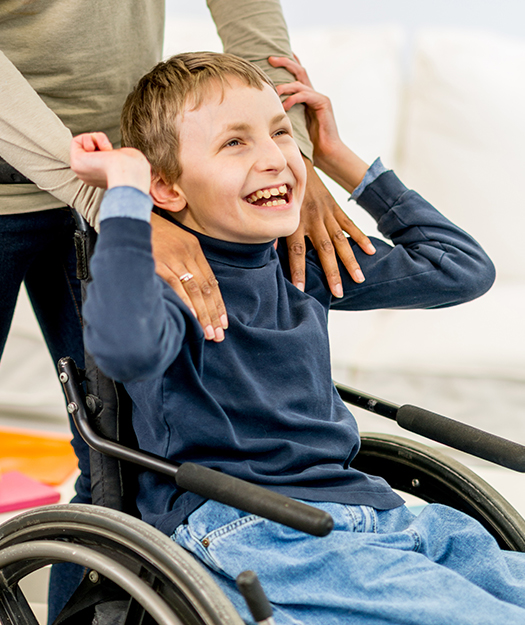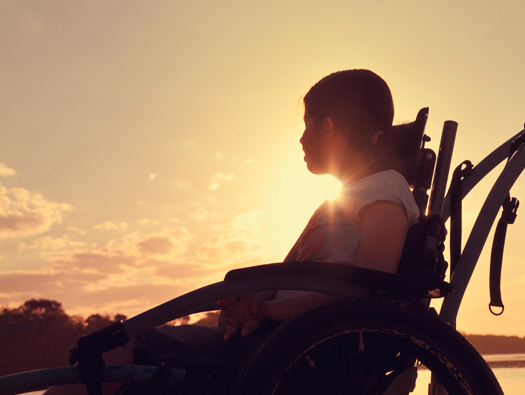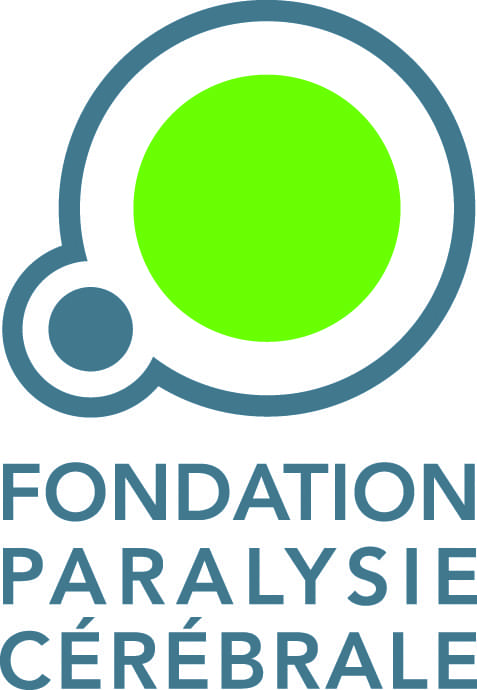
- This disability is the result of irreversible lesions on the brain of the fetus or infant, due to the destruction of certain developing brain cells, that we do not know how to repair.
These lesions cause a set of movement or postural disorders, often accompanied by cognitive or sensory difficulties. It is a permanent condition.
- The main risk factors are infection or illness during pregnancy, prematurity or a difficult childbirth, or illness during the first months of the child’s life.
- For each affected individual, the nature and extent of the disorders depend on the affected areas of the brain, the extent of the lesions, and the timing of the lesions.
Cerebral palsy is the term used internationally to refer to this set of disorders. It includes the « Infirmité Motrice Cérébrale »(or IMC), a term widely used in France, and polyhandicap :
- The « Infirmité Motrice Cérébrale » was described in the 1960s by Prof. Guy Tardieu. It refers to predominantly motor disorders, sometimes accompanied by sensory disorders, but without intellectual impairment ;
- Polyhandicap refers to the most severe forms of motor and sensory damage, usually associated with intellectual deficiencies
Variable Disabilities
Each individual affected, depending on the location, extent and severity of the brain lesions, will present particular symptoms of motor handicap as well as associated handicaps. It is this heterogeneity of disorders, in particular, that makes cerebral palsy difficult to define and to study.
Some children will only show an isolated motor deficiency without any cognitive impairment. Others associate one or more cognitive impairments with their motor deficiency. Some will walk, with a slight limp, while
others, quadriplegics, will be totally dependent for each everyday activity. Between these two extremes, all intermediate states are possible.

Causes
The causes of cerebral palsy are multiple but the cause is unknown in 40% of cases.
Cerebral palsy is the result of a combination of events occurring either before, during or after birth that can lead to an injury in a baby’s developing brain.
These events include complications of a difficult delivery, neonatal stroke, but also an infection or illness during pregnancy (such as rubella, toxoplasmosis or side effects of certain medication) or during the first month of the child (meningitis for example, but also the consequences of trauma due to abuse).
These events will cause a decrease or even a stop of the supply of blood or oxygen to certain parts of the brain (it is referred to as anoxia-ischemia), or a cerebral haemorrhage, causing brain lesions.
These lesions are irreversible, and will cause the various motor, sensory or cognitive disorders experienced by individuals throughout their life.
Prematurity and low birth weight are important risk factors for CP.
Premature birth (between 6 and 8 months of pregnancy) exposes the child to a risk of cerebral haemorrhage. The risk is even greater when the birth weight is low (less than 1500 g) and the birth is premature (less than 31 weeks).
mother of Lucie, 12 years old
"Lucie is 12 years old. Born premature at 28 weeks, she is suffering from cerebral palsy..."
We need you to finance our projects



